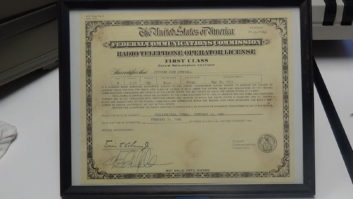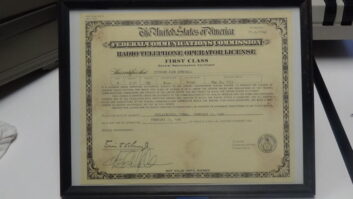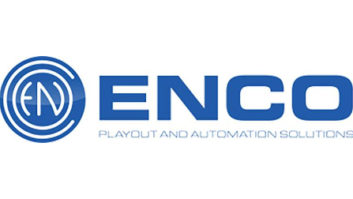Our Radio World colleague Charles S. “Buc” Fitch, P.E., recently completed a relay interface assembly for controlling an older auxiliary transmitter.
Late-model transmitters have remote control terminals operating on 5, 12 or 24 VDC, perfect for interfacing to an external remote control system. Many older transmitters don’t include this feature and instead use 120 or 240 VAC for their control ladders.
Connecting these terminals directly to a remote control is asking for trouble for several reasons.
First, the current rating used in the transmitter may exceed the rating of the remote control relays. There is also the possibility that you can short the control ladder AC to the remote control, causing serious damage to the remote control, as well as yourself. Finally, good engineering practice frowns on having raw 120 or 240 VAC on terminal strips in the back of an equipment rack. It’s just waiting to “bite” you.
The solution is a relay interface, such as the one Buc has built and seen in Fig. 1. The terminal connections are the correct orientation for attachment to the inside front wall where the control wiring is located.

Fig. 1: This remote interface mounts inside the transmitter.
The top strip of 12 connections are (in pairs) from left to right for the 120 Volt AC transmitter control ladder. Buc chose relays with contacts rated for this voltage. The contacts handle filament on/off, plate (high voltage) on/off and power raise/lower.
If you set out to build such an interface, add Buc’s confidence LEDs for each relay. The green LEDs are located along the lower left of the board. This simplifies troubleshooting between the transmitter and the remote control — no more worrying whether the relay is actually pulling in.
Fig. 2 shows a side view. The metal standoffs help with mounting to the transmitter wall.

Fig. 2: Side view. By sandwiching the control relays under the terminal board, we get a compact interface.
* * *
One of the best design criteria for broadcast equipment is longevity in the field.
Although developed years ago, the Gentner VRC2000 Remote Control System is still going strong at a lot of stations. Channel parameters are programmed in a volatile memory. The memory is “kept alive” with a coin battery inside the unit.
The pitfall is if the battery fails and you lose AC power to the unit, you must re-enter all the programming functions, which is not a fun project.If you have one of these workhorses handling your remote control functions, read on.
First, if you haven’t replaced the battery, it may be dead and you’re skating on thin ice. But before you change it, see what Saga’s Ira Wilner suggests.
Recently on the PubTech listserv, engineers discussed adding wires to the coin battery contacts and running them outside the unit to an external battery holder. Not a bad idea; it eliminates removing the VRC from the rack, popping the top and changing the battery on a routine basis.
Ira’s suggestion is to plug the VRC into a UPS, which makes changing the battery a moot point. However, make sure the internal coin cell battery is fresh before unplugging the VRC. You don’t want to lose the programming in the time it takes to move the AC cable to the UPS!
He chose a UPS because of the risk of shorting battery leads while soldering the wires, and subsequent loss of programming.
Certainly, another solution is to piggyback new batteries inside the unit. But be careful. One wrong move and you’re faced with a long re-programming task. (This may happen anyway, if you ignore the battery and at some point lose power.)
Let me know if you have other equipment with similar issues and how you handled them. Email suggestions and comments to [email protected].

Fig. 3: These work great for removing tarnish on contacts, especially tarnished copper transmission line connections.
* * *
Brian Urban, chief operator at the University of Texas at Austin’s KUT(FM), weighed in on our earlier discussion of corroded batteries: “I’ve had much better luck recovering from leaking batteries since I remembered an acid will neutralize a base.”
But in the case of seriously corroded terminals, Brian has resorted to 3M Scotch-Brite pads to clean the terminals, after using the vinegar or baking soda. Next time you’re at the store, pick up a pack of pads. Be sure you get the ones that are not impregnated with soap!
Contribute to Workbench. You’ll help your fellow engineers, and qualify for SBE recertification credit. Send Workbench tips to [email protected]. Fax to (603) 472-4944.
Author John Bisset has spent 43 years in the broadcasting industry and is still learning! He is SBE certified and is a past recipient of the SBE’s Educator of the Year Award.












